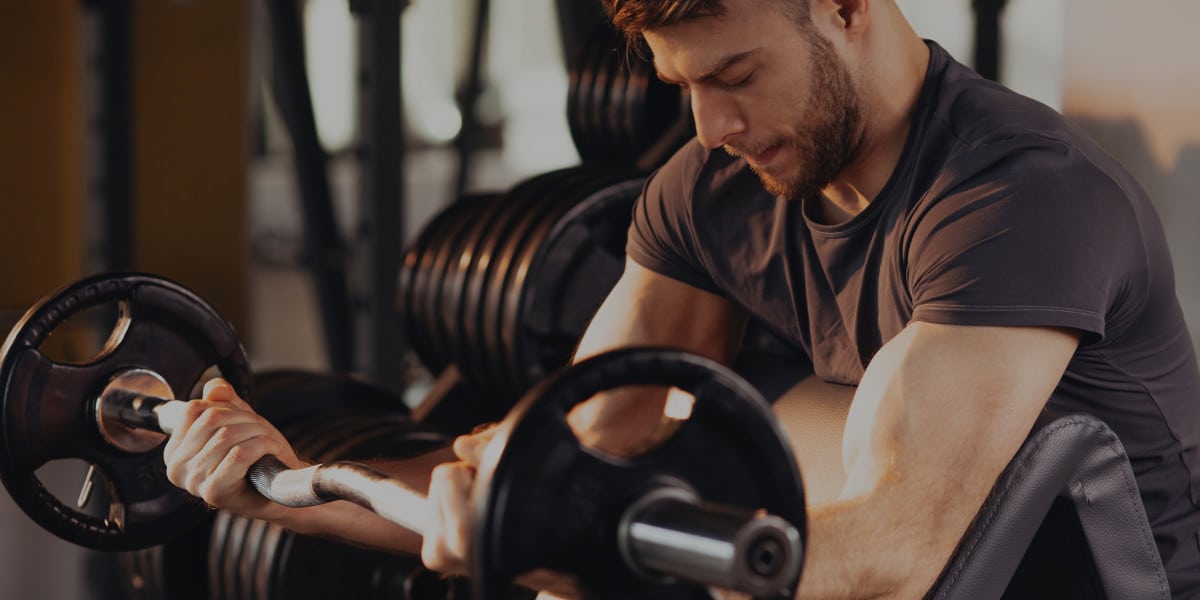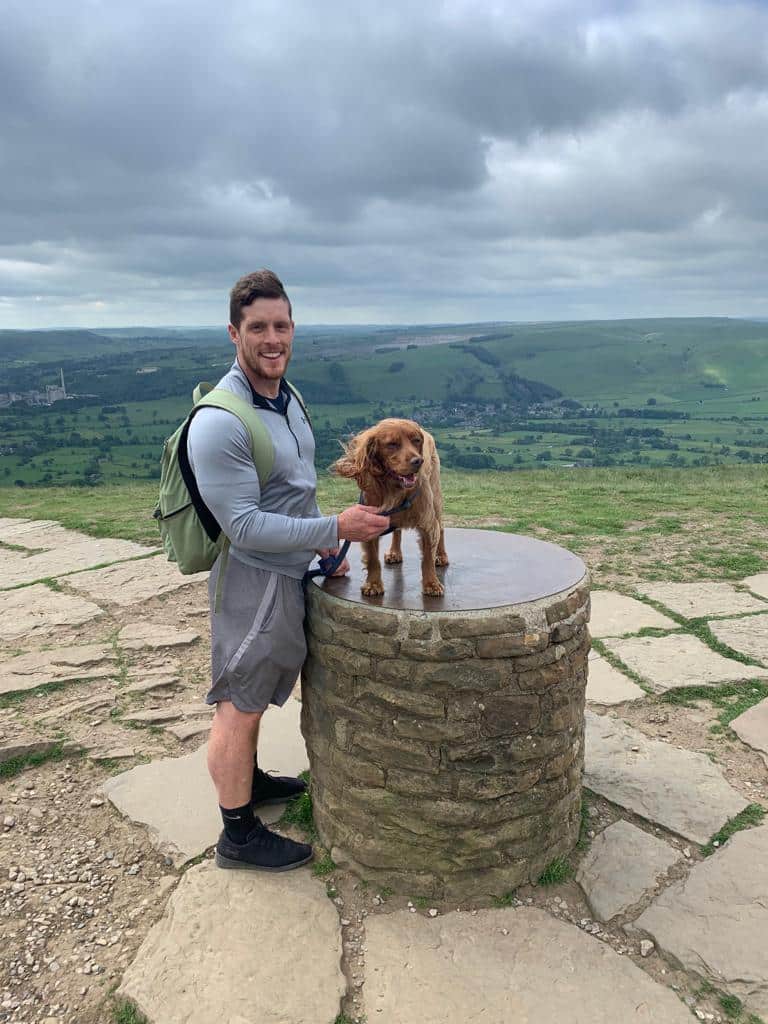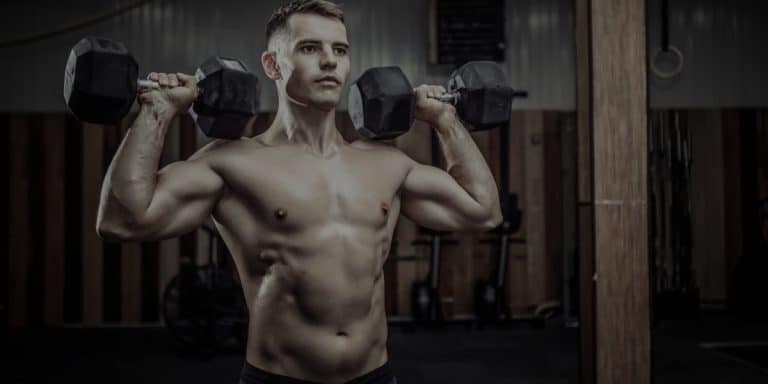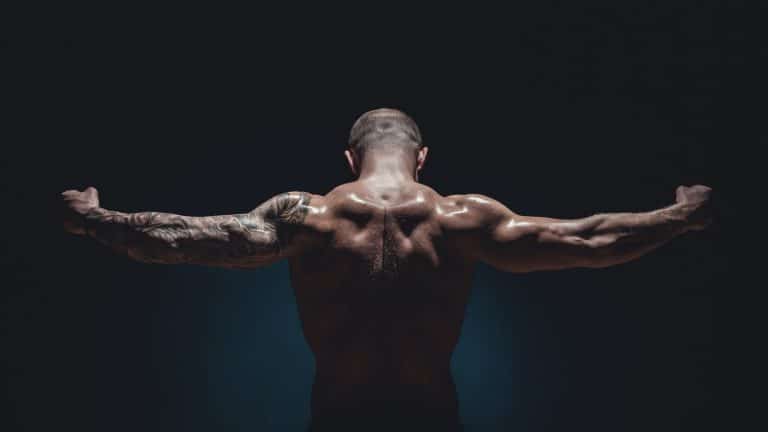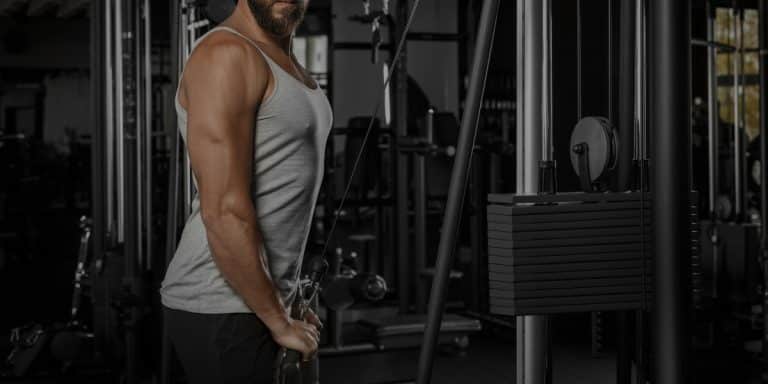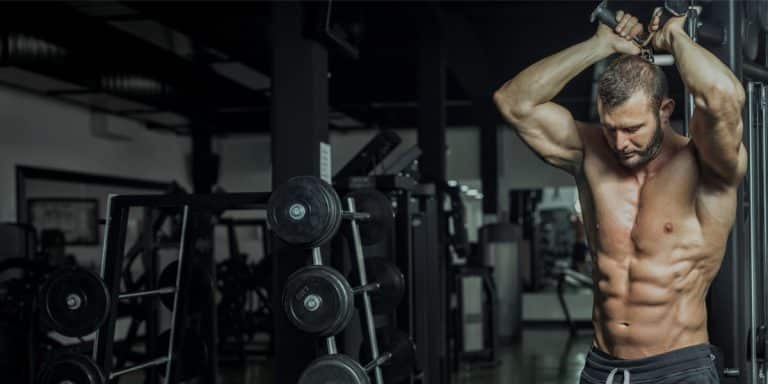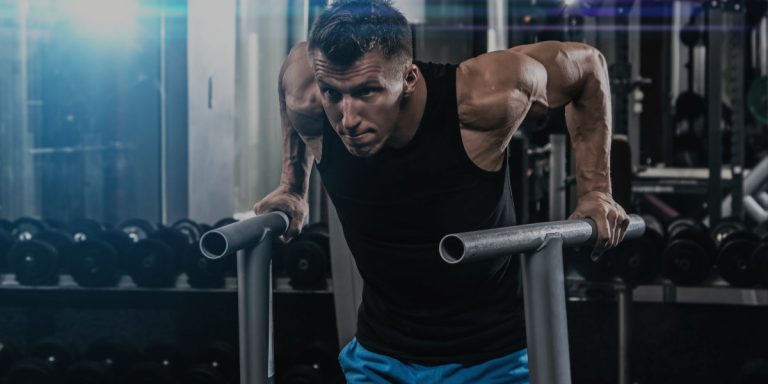Long Head Bicep Exercises
Looking for the best long head bicep exercises? Our main man Ben Hardman has you covered as he shares his top 8 exercises for great-looking biceps…
Are you looking to grow your biceps? Is your new focus to laser in on the long head fibres?
You’re not the only one!
Everyone – and I mean everyone – can relate to big upper arms. Although the biceps aren’t the biggest muscle in your body (some gym bros might disagree), it’s a true symbol of muscle building. Perhaps the symbol.
For the gym goers, let’s face it, they’re a bit of a show muscle. And there’s nothing wrong with this!
When it comes to bicep appearances, the long head has a starring role. It sits towards the outside of your upper arm compared to the short head, which is on the inside.
A well-developed long head segment gives your biceps great length and height at the peak when you flex. For most lifters, it’s a crucial focus point.
Alongside the aesthetics, the biceps are also a very functional muscle too. You’ve probably not thought about it too much, but they have a few important roles in everyday life. The biceps help bend your elbow, rotate your forearm, and help lift your arm out to the side.
So, let’s take a look at the science-backed long head bicep exercises you need in your arm routine.
My Top 8 Long Head Bicep Exercises
Now, let me be open. You can’t fully isolate your long head bicep. Any curling motion of your elbow will engage both your long head and short head.
That said, you can certainly choose exercises that focus on the long head section. Here are my top 8 exercises that will emphasise and grow the long head biceps.
Weighted Chin-Up
Exercise type: Compound
Reps: 5-10
It’s always a good idea to start off with the harder, compound exercises. Science (and logic) tells us that you have more energy at the start of a workout and should prioritise the more exerting exercises.
Although the chin-up is a simple exercise, it’s definitely exerting. Even more so when you add some weight between your legs. I recommend using a chained dipping belt for this rather than having a dumbbell between your legs.
The chin-up is classed as a compound exercise as it works both your elbow flexion (the curl part) and the supination (rotation) of the forearm under load. More on this in the anatomy section underneath the exercises.
Performing a chin-up with an underhand grip isn’t to be confused with a pull-up, which is performed with a wider overhand grip. Studies have shown that the chin-up stimulates more bicep activity than the pull-up.
As this can be a tough exercise, aim for fewer reps with more load if possible.
Incline Dumbbell Curl
Exercise type: Isolation
Reps: 8-12 (for each arm, can perform together or alternating arms)
The incline dumbbell curl is one of the best for targeting the long head of your biceps. This is because it engages the long head fibres throughout the whole range of motion.
What you’ll need is a bench set at a 45-degree angle and a pair of dumbbells you can do at least 8 reps with. In my experience, you can’t go too heavy with this exercise if you want to maintain proper form.
It’s the starting position which is key to this move. Your arms should be hanging at your sides with your elbows back. This position stretches your bicep out nice and long, which immediately puts the long head under activation as you start to curl.
As you perform the move, keep your elbows back and rotate your wrists as you curl your arms towards horizontal. At the top of the position, the palms of your hands should be facing upwards.
If you can feel your front deltoid working, you’ll need to adjust the bench angle. If your arm is too far back at the beginning, you might cause excessive strain on your tendon. It all depends on your shoulder flexion and individual anatomy, so try the move out first with a light pair of dumbbells.
Standing Dumbbell Curl
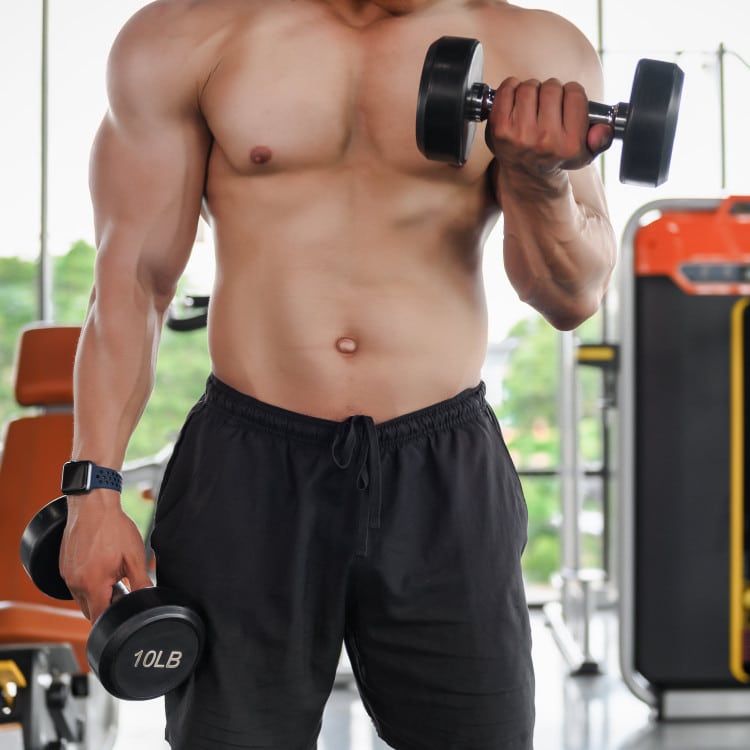
Exercise type: Isolation
Reps: 8-10 (alternating arms, 16-20 reps altogether)
The standing dumbbell curl gives your long head biceps a comprehensive workout. Like the incline curl above, it takes your muscle through the full range of flexion and supination.
Begin standing with your hands to the side of your body in a neutral position (thumbs pointing forward).
As you curl the dumbbells up, your wrists will gradually rotate until your thumbs are facing outwards at the top of the position. Give your biceps a nice squeeze here!
Perform 8-10 reps for each arm, or 16-20 reps in total if you alternate your curls, which I like to do. This exercise can be performed seated too.
Dumbbell Hammer Curl
Exercise type: Isolation
Reps: 8-12
One of my personal favourites. The dumbbell hammer curl.
As you perform this exercise with a neutral grip, it’s a powerful curl for activating the long head biceps, as well as the brachialis and forearm muscles.
You can go pretty heavy with these curls, but remember to keep control as you bring the dumbbell up. Make sure to keep your elbows near your side and focus on the contraction of your biceps.
EZ Bar Curl
Exercise type: Isolation
Reps: 8-12
The bar curl, be it an EZ or barbell, doesn’t offer the same degree of supination as you get with dumbbells.
However, what they do allow for more effectively is progressive overload. It’s much easier to add 5kg onto the bar curl than it is with dumbbells.
The difference between the bars is that the EZ eases the strain on your wrists, which remain in a fixed position.
Some people claim a narrower grip benefits the long head, whereas others favour a wider grip. I’d go with whatever feels best for you. Either way, the EZ bar curl is a winner for your bicep, so get curling!
Bayesian Cable Curl
Exercise type: Isolation
Reps: 12-15
If you’ve not tried the Bayesian cable curl before, let me tell you, it’s a good one for targeting long head biceps.
To perform the Bayesian, you’ll need a cable station and a D handle. Or two D handles if you want to work both biceps at the same time, which I recommend.
Stand facing away from the machine with your arms behind you. From the side, it will look like your arms are pointing to the 5 o’clock or 7 o’clock position (depending on which side you’re looking from).
Like the incline dumbbell curl, this flexed position stretches out the long head bicep. The difference with the cable is that you add a consistent tension through the full range of motion.
The first few reps feel fine, but the Bayesian curl gets pretty hard, pretty quick, so take this one quite light.
Preacher Curl
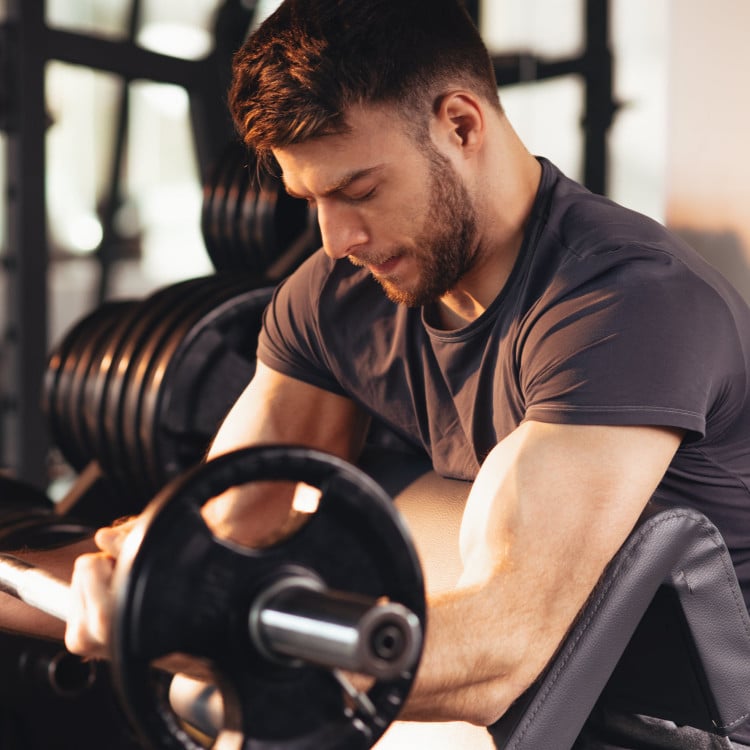
Exercise type: Isolation
Reps: 8-12
Preacher curls are a great way to work the long head of your biceps. The big benefit of the preacher for your long head is that your elbows are in a fixed position and your forearm is supinated with your palm facing up.
This move can be performed with the EZ bar, as a unilateral exercise with one dumbbell or at a preacher curl machine.
I always find the preacher curl very humbling, so swallow your pride a little. Don’t go too heavy, and get your form spot on.
Cable Drag Curl
Exercise type: Isolation
Reps: 10-12
The cable drag curl takes a bit of practice. But once you get used to it, you’ll feel the benefit on your biceps.
Start the curl at the cable pulley machine holding a straight bar in the normal underhand grip position. To perform the drag curl, pull the bar straight up, keeping it close to your body as you move your elbows back behind your back.
This differs from a normal cable curl, which usually comes up in an arc-like motion with your elbows fixed.
Understanding Bicep Anatomy For Growth To Add Size
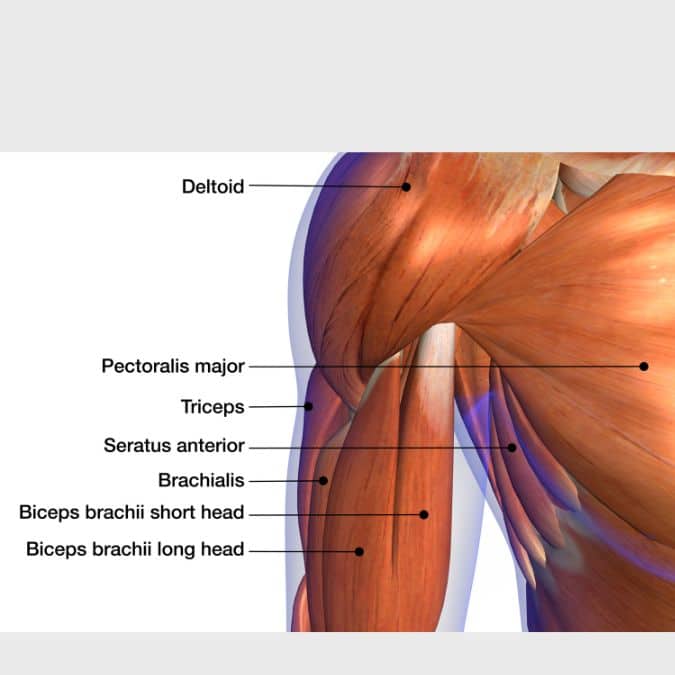
To understand how you can add proper size to your long head biceps, we need to know about the anatomy and functioning of this showstopper muscle.
The proper name for the biceps muscle is the biceps brachii. As you’re already aware, it’s made up of two muscle heads.
And no, a muscle head isn’t just those big guys and girls in the gym.
The head of a muscle is where it attaches to bone. In the biceps case, it has two points of attachment to the shoulder blade. The triceps, for example, has three points of attachment.
The two heads of the biceps are:
- Long head – Found on the outside of the upper arm (the lateral side) running from the bottom of your scapula, under your deltoids and down to your elbow.
- Short head – Runs alongside the long head but on the inside of the upper arm. Like the long head, the short head tendon attaches at the shoulder blade and down to the elbow.
The heads come together in the middle of the upper arm to form a single, thick muscle mass. Although one muscle, the fibres of the two heads do remain somewhat separate. This is particularly true in the core of the muscle.
Together the two heads perform three main functions:
- To flex the elbow and curl the arm
- To rotate your forearm outwards into a supine position
- To help with shoulder flexion and raising your arm out to the side
Who knew the biceps weren’t just for flexing in the mirror?
Knowing the actual functional role of the biceps helps us choose the right exercise to target the muscle fibres effectively.
Training Your Long Head Biceps For Growth
For most muscle groups, I always recommend combining compound movements with isolation exercises.

The biceps do follow suit with this modus operandi, but to a lesser extent. Let me explain.
There’s no getting away from the fact that to train your biceps effectively, including the long head bicep, you need to curl. Lots of curls!
Most curls are isolation exercises. But by their very nature, a curl is performing the primary role of the biceps – elbow flexion.
That being true, heavy compounds can still play an important role. This is because the biceps are slightly dominant in favour of type two muscle fibres. These are the fibre types that like to be trained under greater loads.
Putting these two statements together, to train the long head biceps productively you need to perform curls under load.
There are many ways to do this as you’ve seen with the exercises above. But it doesn’t need to be over-complicated.
I’ve recently been reading Arnold Schwarzenegger’s book, ‘The Education of a Bodybuilder’. There haven’t been many people with better biceps than Arnold, so I’ve been taking notes.
At the end, he goes over some of his favourite training regimes for various levels of lifters. There’s nothing groundbreaking here. He admits it himself.
As he describes, he’s an advocate of keeping exercises simple but training the muscle hard. Very hard, in his case.
Top Tips To Emphasise The Long Head
In short there are a few main training methods to keep in mind if you want to put the focus onto the long head biceps:
- When using dumbbells, keep a neutral grip or one that goes from neutral to supine (underhand with your palm up). Wrist supination forces your biceps to move the load.
- When using a barbell, there are pros and cons to a close and wide grip. Focus on squeezing the bicep at the top of the position.
- To add emphasis and stretch the long head on certain exercises, keep your elbows behind your back.
- Keep your elbows close to your side as you curl up.
To see good bicep growth, you need to train this muscle group regularly, consistently, and with progressive overload.
Aim for at least 8 weekly working sets that include some of the bicep exercises listed above. If you’re an advanced trainer, this can go up to 20.
Final Thoughts On Building Your Long Head Biceps
Developing impressive biceps is a long haul project. But it’s worth the effort.
To build the long head biceps in particular, you need to train with the right exercises and techniques. This will ensure you put the focus on the long head muscle fibres you’re targeting.
Remember, effective muscle growth is not just about the number of sets, it’s about the quality of your form and execution. You also need to instil progressive overload at the heart of your training over the long term to build big bicep peaks.
Sources:
Biceps muscle fibre types – https://link.springer.com/article/10.1007/s11517-006-0114-5
Effect of shoulder position on the biceps brachii EMG in different dumbbell curls – https://www.ncbi.nlm.nih.gov/pmc/articles/PMC3737788/
https://pubmed.ncbi.nlm.nih.gov/8404567/

